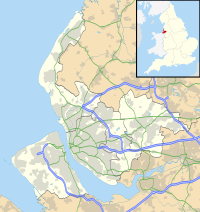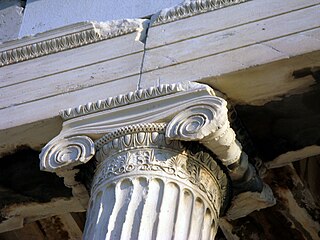
The Congregational Church is in Station Road, Hoylake, Wirral, Merseyside, England. It is recorded in the National Heritage List for England as a designated Grade II listed building.

St Mary's Church is in Knowsley Lane, Knowsley Village, Merseyside, England. The church is recorded in the National Heritage List for England as a designated Grade II* listed building. It is an active Anglican parish church in the diocese of Liverpool, the archdeaconry of Liverpool and the deanery of Huyton. In the Buildings of England series, Pollard and Pevsner describe the church as being "largish" with "an intimate interior".

St Mary's Church is in St Mary's Street, Crewe, Cheshire, England. It is an active Roman Catholic parish church in the diocese of Shrewsbury. The church is recorded in the National Heritage List for England as a designated Grade II listed building.

St Paul's Church is in Brook Street, Macclesfield, Cheshire, England. It is an active Anglican parish church in the deanery of Macclesfield, the archdeaconry of Macclesfield, and the diocese of Chester. The church is recorded in the National Heritage List for England as a designated Grade II listed building. It was a Commissioners' church, having received a grant towards its construction from the Church Building Commission.

St George's Church stands in the centre of the town of Poynton, Cheshire, England. It is an active Anglican parish church in the deanery of Cheadle, the archdeaconry of Macclesfield, and the diocese of Chester. The church is recorded in the National Heritage List for England as a designated Grade II listed building. It is the tallest building in Poynton.

St Peter's Church is in Windmill Street, Macclesfield, Cheshire, England. It is an active Anglican parish church in the diocese of Chester, the archdeaconry of Macclesfield, and the deanery of Macclesfield. It forms a team ministry with three other Macclesfield churches: St Michael, All Saints, and St Barnabas. The church is recorded in the National Heritage List for England as a designated Grade II listed building. It was a Commissioners' church, having received a grant towards its construction from the Church Building Commission.
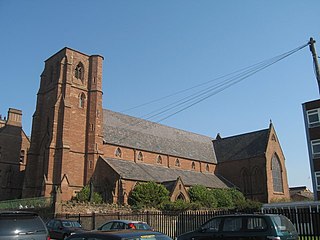
St Anne's Church is in Overbury Street, Edge Hill, Liverpool, Merseyside, England. It is an active Roman Catholic parish church in the Archdiocese of Liverpool. In 1999 its parish was combined with that of the Church of St Bernard. The church is recorded in the National Heritage List for England as a designated Grade II listed building.

St Paul's Church is in Railway Road, Adlington, Lancashire, England. It is an active Anglican parish church in the deanery of Chorley, the archdeaconry of Blackburn, and the diocese of Blackburn. The church is recorded in the National Heritage List for England as a designated Grade II listed building. It is registered as a parish of the Society under the patronage of St Wilfrid and St Hilda.

Christ Church is in King's Road, Higher Bebington, Wirral, Merseyside, England. It is an active Anglican parish church in the deanery of Wirral, North, the archdeaconry of Chester, and the diocese of Chester. The church is recorded in the National Heritage List for England as a designated Grade II listed building.
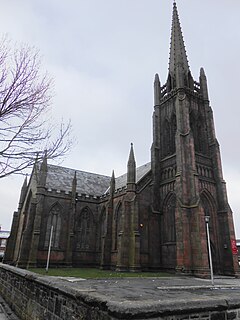
The Church of Christ the King is in Beckwith Street, Birkenhead, Wirral, Merseyside, England. It is an active Anglican parish church in the deanery of Birkenhead, the archdeaconry of Chester, and the diocese of Chester. It is part of the Birkenhead Priory Parish, and serves the centre of the town of Birkenhead. The other church is the parish is the chapel of Birkenhead Priory. The church is recorded in the National Heritage List for England as a designated Grade II listed building.

St Saviour's Church is in Bidston Road, Oxton, Birkenhead, Merseyside, England. It is an active Anglican parish church in the deanery of Birkenhead, the archdeaconry of Chester, and the diocese of Chester. Its benefice is united with that of St Andrew, Noctorum. The church is recorded in the National Heritage List for England as a designated Grade II* listed building.

The Church of Our Lady of the Immaculate Conception is in Cavendish Street, Birkenhead, Wirral, Merseyside, England. It is an active Roman Catholic church in the diocese of Shrewsbury. The church is recorded in the National Heritage List for England as a designated Grade II listed building.
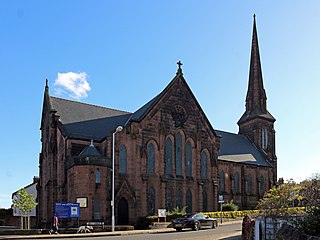
Christ Church is in Christchurch Road, Oxton, Birkenhead, Wirral, Merseyside, England. It is an active Anglican parish church in the deanery of Birkenhead, the archdeaconry of Chester, and the diocese of Chester. The church is recorded in the National Heritage List for England as a designated Grade II listed building. It stands on a sloping site.

The Church of St Paul with St Luke is in Old Chester Road, Tranmere, Birkenhead, Wirral, Merseyside, England. It is an active Anglican parish church in the deanery of Birkenhead, the archdeaconry of Chester, and the diocese of Chester. The church is recorded in the National Heritage List for England as a designated Grade II listed building.
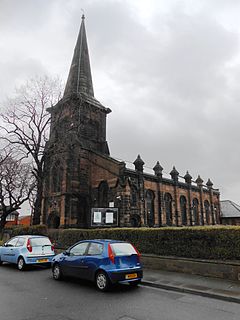
St Peter's Church is in St Peter's Road, Rock Ferry, Birkenhead, Wirral, Merseyside, England. It is an active Anglican parish church in the deanery of Birkenhead, the archdeaconry of Chester, and the diocese of Chester. The church is designated by English Heritage as a Grade II listed building.
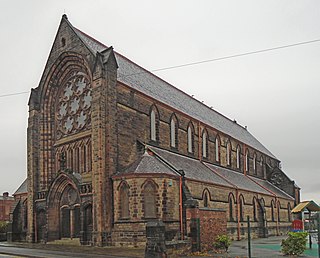
The Church of Our Lady Star of the Sea is in Wheatland Lane, Seacombe, Wallasey, Wirral, Merseyside, England. It is an active Roman Catholic parish church in the diocese of Shrewsbury, and its parish is combined with that of St Joseph, Wallasey. The church is recorded in the National Heritage List for England as a designated Grade II listed building.

St Alban's Church, is in Mill Lane, Liscard, Wallasey, Wirral, Merseyside, England. It is an active Roman Catholic church in the diocese of Shrewsbury. The church is recorded in the National Heritage List for England as a designated Grade II listed building.
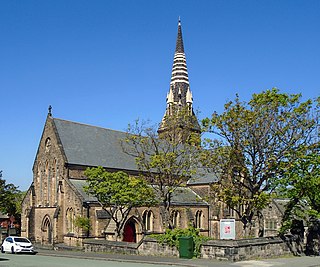
St James' Church is in Victoria Road, New Brighton, Wirral, Merseyside, England. It is an active Anglican parish church in the deanery of Wallasey, the archdeaconry of Chester and the diocese of Chester. Its benefice is united with that of Emmanuel, New Brighton. The church is recorded in the National Heritage List for England as a designated Grade II listed building.

St Stephen's Church is in Prenton Lane, Prenton, Birkenhead, Wirral, Merseyside, England. It is an active Anglican parish church in the deanery of Birkenhead, the archdeaconry of Chester, and the diocese of Chester. The church is recorded in the National Heritage List for England as a designated Grade II listed building.

St Paul's Church is an active Anglican parish church in Church Crescent, Seacombe, Wallasey, Wirral, Merseyside, England. It belongs to the deanery of Wallasey, the archdeaconry of Chester and the diocese of Chester. The church is recorded in the National Heritage List for England as a designated Grade II listed building.




